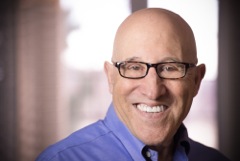When the speaker said “We were in a pickle, so we threw a Hail Mary pass”, most of the audience understood that he had been in a difficult situation and took  desperate measures in the hope of an unlikely success. The problem is that a third of the audience was from other cultures. Although fluent in English, they sat wondering how he could have had a religious experience preserved in a cucumber.Recently, while preparing a presentation for an audience that will be translated into twelve languages, I was reminded once again just how culturally dependent our presentations are.
desperate measures in the hope of an unlikely success. The problem is that a third of the audience was from other cultures. Although fluent in English, they sat wondering how he could have had a religious experience preserved in a cucumber.Recently, while preparing a presentation for an audience that will be translated into twelve languages, I was reminded once again just how culturally dependent our presentations are.
Here are 10 ESSENTIALS to keep in mind for your international presentations:
1. Globalize Your References: Mentioning American generals and politicians or the likes of Rep Van Winkle, Jerry Rice, Ellen DeGeneres, David Letterman or Jimmy Fallon will likely result in blank stares or annoyance.
2. Learn About Them: The audience will appreciate you researching the local terrain and culture. The first time I spoke in Amsterdam, I visited their two major art museums and found a way to insert a few images of local art into my speech to make a point. Quite a few attendees commented afterwards how no other foreign speaker seemed to know what country they were in.
3. Remember the US has 50 States: Our Canadian friends are justifiably bothered when a speaker is too US-Centric. Ask a Canadian the most important thing to remember when speaking in Canada and they will probably say: “We are a separate country.”
4. Watch Your Words: They can have very different meanings. Speaking to 1,500 people in Great Britain years ago, I said: “…he fell on his ‘fanny’…”. Not a good idea. Turns out the word has a much more vivid meaning across the pond. Check out Urban Dictionary for details!
5. Beware of Body Blunders: Make sure you are dressed appropriately for the circumstance and then watch your gestures. They can get you in trouble. For instance, in much of the world a thumbs-up means good or OK to you, but in most of the Middle East and parts of Asia it is insulting and obscene.
6. Edit People Pictures: If half your audience is from Asia, it’s a mistake to have a preponderance of Caucasian models in your pictures; When in doubt, err on the side of diversity.
7. Check Those Images: Use structures and landscapes your audience will recognize. For instance, to illustrate risk, I use a photo of a suspension bridge. The particular bridge varies based on the part of the world my audience calls home.
8. Practice: Don’t underestimate how tricky it can be to change even a few words in a segment you have used many times. For example, I often cite a statistic about life expectancy in the “United States” in the year 1900. For an international audience, I say “industrialized world” and change the statistic accordingly. Not a big change, but remembering to say it a different way affects my focus and pacing. The solution was to practice it until it flowed naturally.
9. Watch Out For Jokes: Even domestic comedians will tell you that what’s funny in Des Moines might fall flat in Manhattan. Take the show further from home and blank stares are likely. Test your humor with some locals before you try it with an audience. Unless you are certain a joke will play, skip it.
10. Honor the Interpreters: For much of the audience, you won’t be giving the speech. They will. If you speech is all facts and figures, they will be translating it literally. When you share concepts and stories, however, they will be interpreting your words for both language and culture. If possible, meet with them beforehand and go over your talk in as much detail as they are willing to endure. Give them some time to think about your meaning beforehand.To sum it up, know where you are and to whom you are speaking and adjust your words and manner accordingly. Then pay attention to the audience’s response and see what you learn.
 Hall of Fame speaker Alan Parisse has been coaching presenters and delivering keynotes for over 25 years. Named “One of the Top 21 Speakers for the 21st Century” by Successful Meetings Magazine, he is a keynote speaker for a wide variety of industries and organizations. Alan is a passionate presentation coach to executives, financial advisors, sports stars and sales presenters.
Hall of Fame speaker Alan Parisse has been coaching presenters and delivering keynotes for over 25 years. Named “One of the Top 21 Speakers for the 21st Century” by Successful Meetings Magazine, he is a keynote speaker for a wide variety of industries and organizations. Alan is a passionate presentation coach to executives, financial advisors, sports stars and sales presenters.
Client Raves:
“Transformational. A professional breakthrough.”
“Fantastic!! Ultimately a straight route to improve my impact and influence.”
“As much a Leadership Development experience as a Public Speaking course.”
“Thank you for pushing me to tap into “tools” I didn’t know I had.”
“Definitely the best program I’ve ever attended.”
 Hall of Fame speaker Alan Parisse has been coaching presenters and delivering keynotes for over 25 years. Named “One of the Top 21 Speakers for the 21st Century” by Successful Meetings Magazine, he is a keynote speaker for a wide variety of industries and organizations. Alan is a passionate presentation coach to executives, financial advisors, sports stars and sales presenters.
Hall of Fame speaker Alan Parisse has been coaching presenters and delivering keynotes for over 25 years. Named “One of the Top 21 Speakers for the 21st Century” by Successful Meetings Magazine, he is a keynote speaker for a wide variety of industries and organizations. Alan is a passionate presentation coach to executives, financial advisors, sports stars and sales presenters.
Lisa Casden has been coaching presenters for 10 years. A former professional figure skater, coach and choreographer, Lisa leverages her unique background and point of view to help speakers organize their physicality in ways that best support their message.
has been coaching presenters for 10 years. A former professional figure skater, coach and choreographer, Lisa leverages her unique background and point of view to help speakers organize their physicality in ways that best support their message.

 Keynote Topics
Keynote Topics About Alan Parisse
About Alan Parisse Why Hire Alan?
Why Hire Alan? Client Testimonials
Client Testimonials Booking Request Form
Booking Request Form